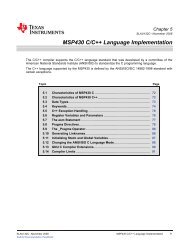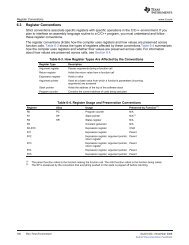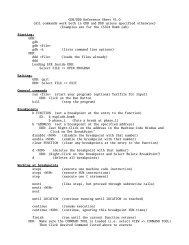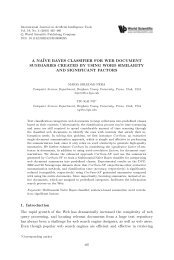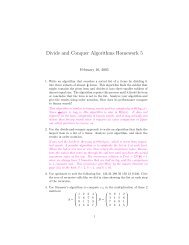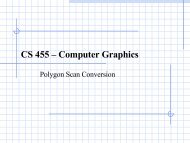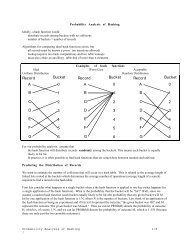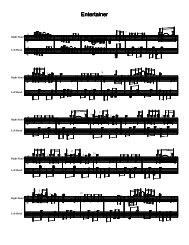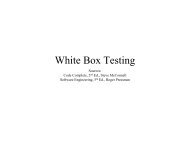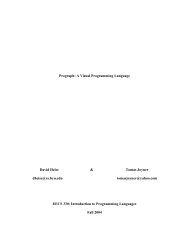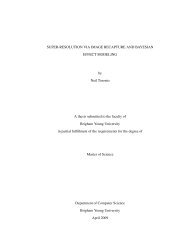Approximate Implicitization Using Monoid Curves and Surfaces
Approximate Implicitization Using Monoid Curves and Surfaces
Approximate Implicitization Using Monoid Curves and Surfaces
Create successful ePaper yourself
Turn your PDF publications into a flip-book with our unique Google optimized e-Paper software.
multiple point T 0 is chosen such that it lies on the \concave" side of the curve <strong>and</strong> on the other axis of<br />
symmetry a 2 . Finally, the other vertices of the reference triangle, T 1 <strong>and</strong> T 2 , are found as the intersections<br />
between the bounding box's base DC <strong>and</strong> the lines joining the corners A <strong>and</strong> B with T 0 .<br />
T 0<br />
T 2<br />
|AB|<br />
A<br />
P 0<br />
P 3<br />
P 2<br />
P 4<br />
P1<br />
T 1<br />
C<br />
D<br />
B<br />
a 1<br />
a 2<br />
Figure 6: Reference triangle determination.<br />
2. Convert the parametric curve p(v) into barycentric form.<br />
Let T 0 T 1 T 2 be the reference triangle with T 0 as its multiple point. Then arbitrary point P can be converted<br />
into barycentric form<br />
P =<br />
x<br />
y<br />
<br />
= sT 1 + tT 2 + uT 0 = T 0 +[T 1 , T 0 ;T 2 , s<br />
T 0 ] ; (13)<br />
t<br />
or 8 <<br />
:<br />
s<br />
t<br />
<br />
= [T 1 , T 0 ;T 2 , T 0 ] ,1 (P , T 0 );<br />
u = 1 , s , t:<br />
For a rational Bezier curve, the conversion can be completed simply by applying transformation (14) to<br />
each control point P i . The converted curve isnow put in the form<br />
p(v) =<br />
0<br />
@ s t<br />
u<br />
1 P n<br />
A =<br />
i=0<br />
nP<br />
i=0<br />
! i<br />
P i B n i (v)<br />
(14)<br />
! i B n i (v) ; v 2 [0; 1]: (15)<br />
12




